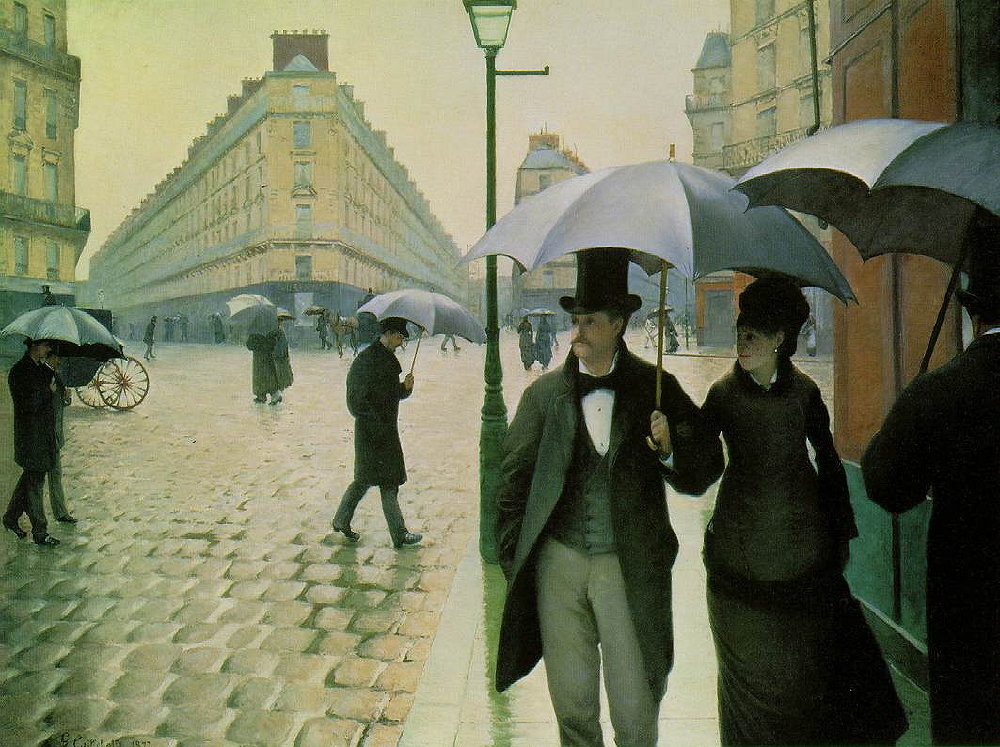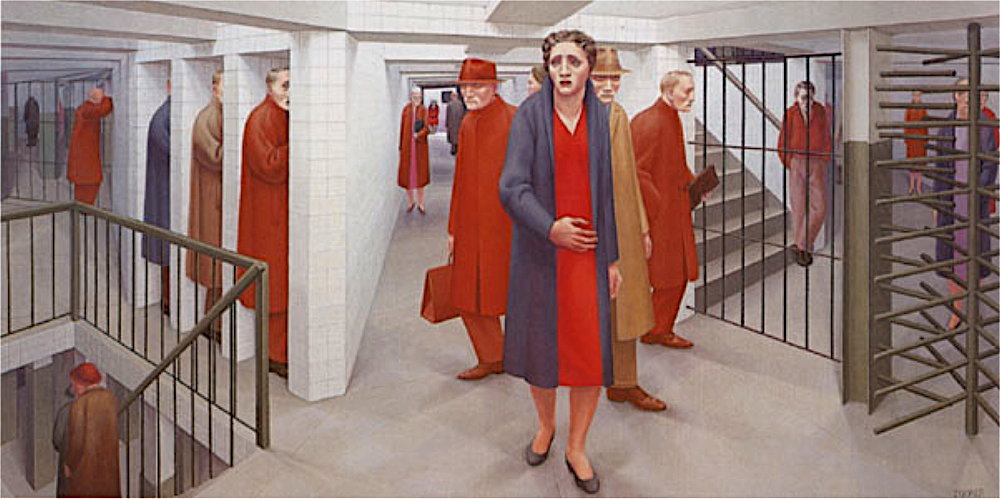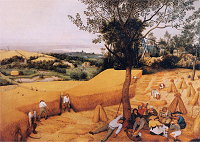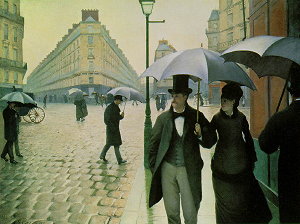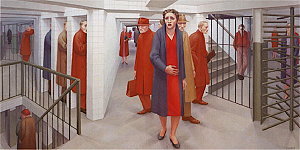Emphasis Analysis01 (turn in by email: gclayton@harding.edu)
The works:
p. 224A Bruegel, (external links: The Harvesters — zoom; (img))
p. 195D Caillebotte, (external links: Rue de Paris; Temps de Pluie; (img — zoom))
p. 212A Tooker (external links: Tooker, Subway. (img) )
For each of the works, describe:
1) the focal area(s) and
2) the tactics and forms that are creating the focal area.
Respond to the assigned questions, below. Further notes are beneath each heading.
Which parts of the image/design draw your attention?
Which areas are graphically prominent and "emphatic"?
Begin by simply looking at the design.
Now notice what you noticed — what parts of the design drew your attention?
Usually there will be one region that is most prominent — the major focal area.
There will also be several minor focal areas — areas of interest, but not so prominent or complex as the major focal area.
Most designs are composed to help guide the viewer's eye from one focal area to the next along a "graphic hierarchy".
Be specific.
Why do areas that have graphic emphasis, have it?
Consider the various factors that contribute to graphic emphasis.
See how many of these conditions have been used to graphically empower the design's focal areas.
Heightened contrast.
— partiicularly heightend value contrast. Where are the areas with the most range of value?
— contrast of color
— contrast of size
— contrast of shape.... frankly anything that differs from the general, dominating traits. (see Anomaly, below)Anomaly
Has the designer established dominant traits — a color that is used a lot? ...a texture that is reused? ...a shape or a kind of line that recurs?
How are the focal areas different from those dominant traits?
Is there some patterrn or arrangment that has been used in most of the design? Does the focal area break that arrangement?Position
— central location?
— features lying along the "rule of thirds" lines, or their intersections?Isolation
— Is the focal area surrounded by empty space...by a simple background or background with a very subdued pattern?Framing
— Are there shapes that "wrap" or enclose the focal area — sort of like a picture frame wrapping a picture?
— ...or concentric circles wrapping around a bullseye?Directional Cues:
— Are there lines or edges that lead toward, or intersect, the focal area? Are there lines or "rays" that radiate from the focal area?
— Are there directional shapes that point toward the focal area?
— Are there progressions or gradients that move toward the focal areas?Well-developed relief areas
— Are non-focal areas subdued?
— Has the artist reduced contrast or pattern or color or variety elsewhere?
Content is the meaning, message, associations, feelings and connotations associated with the work — in essence "what's it saying?"
Explore and describe what the composition communicates — its content.
Explore and discuss how the focal areas help to establish the content.
You might consider one or more of the following questions:
— What is the subject of each focal area?
— What is the mood or attiude of each focal area?
— How do the focal areas interact? What do they do together...in context with each other?
— How does the graphic hierarchy contribute to the content? That is, how does the prominence of each focal area alter the message — why might the artist have chosen to develop one area as a major focal area, and others as only minor focal areas?
— Also, what content or imagery is left in relief areas? What parts of the image tend to be unnoticed? How does that contribute to the artist/designer's message?
p. 224A Bruegel, The Harvesters — with zoom viewing; (image and context (The Met))
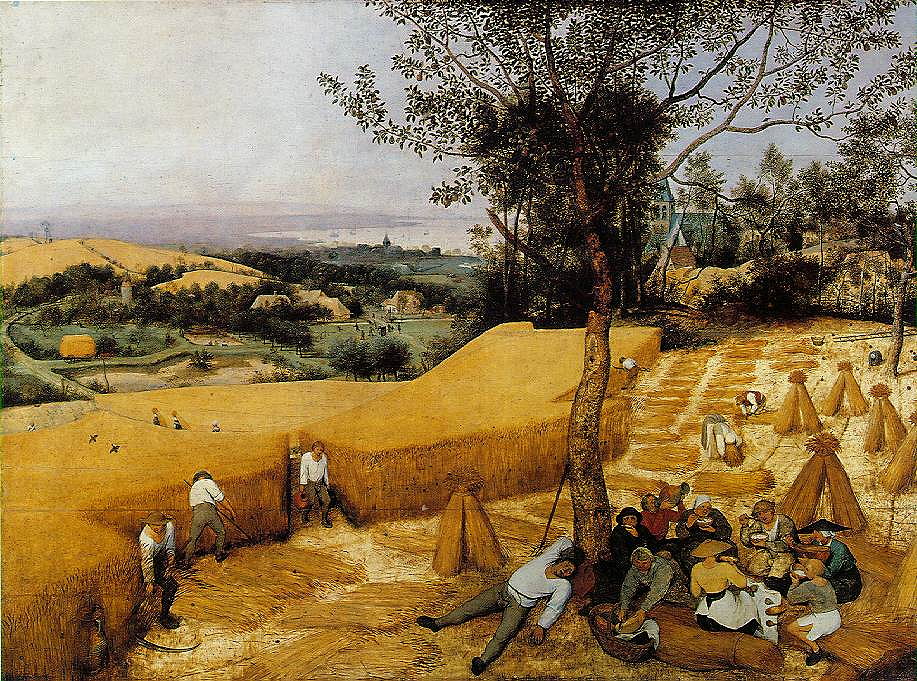
p. 195D Caillebotte, Rue de Paris; Temps de Pluie; (image with zoom option)
